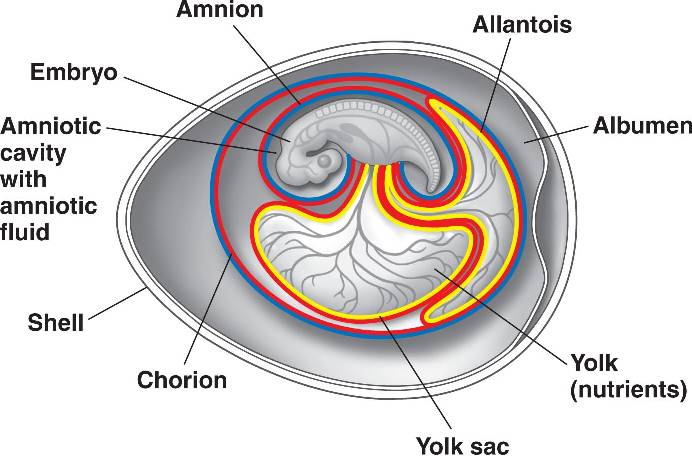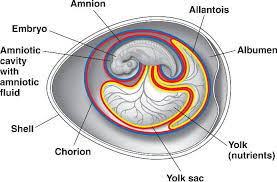Which character of vertebrates is associated with colonization of land?
2 Answers
Hemoglobin, powerful respiratory system and locomotion and an evolved nervous system gave vertebrates the ability to colonize land.
Explanation:
Before the vertebrates insects had colonized land.They could breathe on land and they some ancient insects reached large sizes too. However they did not possess lungs a four chambered heart or hemoglobin.
These three made it possible for vertebrates to use the oxygen in the atmosphere and reach it to all the cells specially the muscle cells.
Vertebrates acquired a good thermoregulatory system too,as a consequence of the above.
They also had a more evolved nervous system in which brain and sense organs worked in coordination with the muscular system.
Vertebrates got better at figuring out distance and depth.This helped them to catch prey or evade predators.
One single character that helped vertebrates in colonising the land was evolution of AMNIOTIC EGG by early reptilians.
Explanation:
First vertebrate that ventured on land was definitely amphibians but they could not actually colonise the land, because of their dependence on water for reproduction.
Around 300 million years ago, vertebrates could actually become truely terrestrial with the evolution of shelled egg (=cleidoic egg); and this transition was achieved by early reptiles.
First amniotic egg was a marvel in itself as it allowed the embryo to develop in a closed aqueous environment despite being on land. This type of egg develops extraembryonic membranes like amnion (a water filled sac), chorion (allows gas exchange), allantois (pouch to store excretory material) and yolk sac (stores and supplies nutrients to developing embryo).
External shell helped further to protect the growing offspring. Habit of laying shelled eggs also required coevolution of internal fertilisation.

( )
)
Colonisation of land was associated with few more adaptive features:
- Stronger locomotory muscles
- More efficient lungs
- Highly keratinised skin
